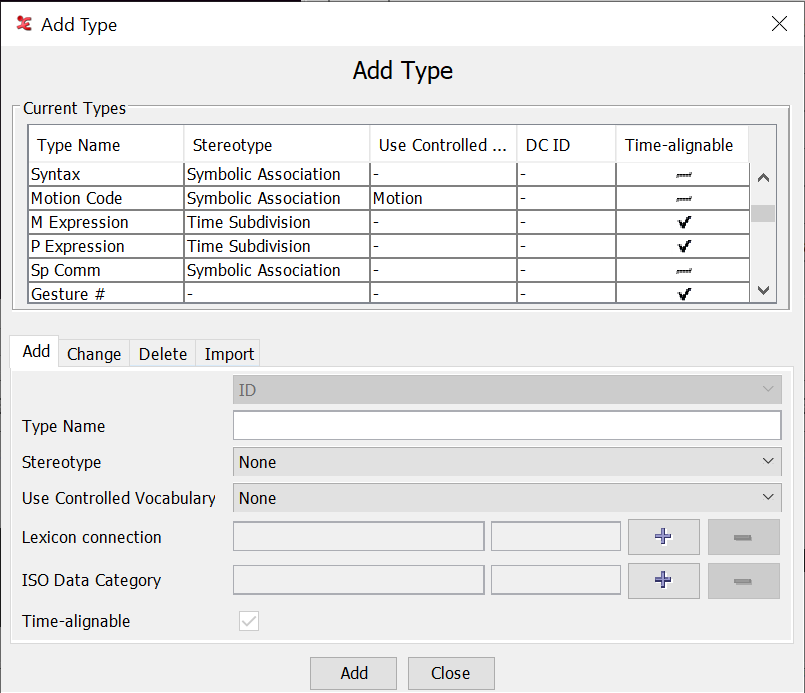ELAN supports the following options:
adding a new tier type (Section 2.3.1);
changing the attributes of a tier type (Section 2.3.2);
deleting a tier type (Section 2.3.3);
importing a tier type (Section 2.3.4).
Every tier is assigned to a tier type. The tier type specifies the stereotypical constraints (and, as a consequence, whether or not the tiers are time-alignable).
Information about the relationship between tiers is given in two different places: for each individual tier it is given in the dialog window (see Section 2.4.1), and for all tiers belonging to one tier type it is given in the window (this section), i.e.:
window: specify the parent tier of the individual tier.
window: specify the stereotypical constraints of tiers belonging to one type.
To create a tier type, do the following:
Click on the menu. The dialog window appears:
Enter the following information for the new type:
Go to . Enter the name or label for the type.
Go to . Select the stereotypical constraint that apply to the tiers based on this type (see Section 2.1).
Optionally go to . Select a controlled vocabulary or leave this to None (see Section 2.6.7).
Optionally go to . Click the button to select a lexicon and a lexicon entry field to be associated with this tier type (see Section 2.7, Section 2.7.2 and Section 3.5.3).
Optionally go to to associate this type with a data category via the button (see Section 2.3.5.
The checkbox cannot be edited, its value depends on and changes with the selected .
Click to save the settings; otherwise click to exit the window without saving them.
